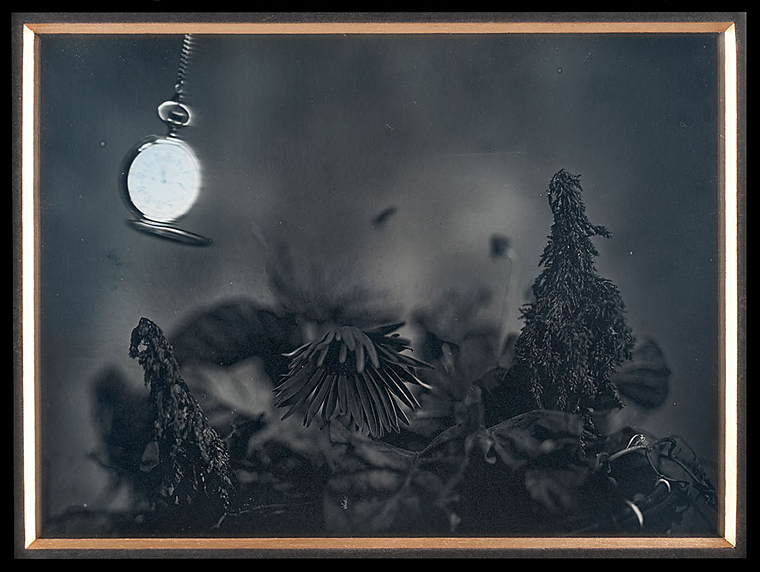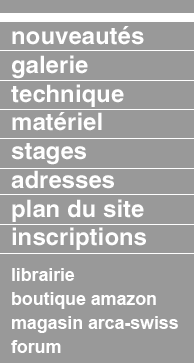
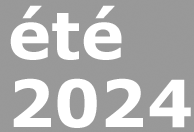
[abonnement gratuit]
the photographer
|
Rob McElroy currently
lives and works in Buffalo, NY as a daguerreotypist and photographer,
where he has a studio, research laboratory, and one of the few, if not
only, permanent galleries in the world designed exclusively for the
display of daguerreotypes.
He has been quietly and
diligently researching, experimenting, and perfecting the process of
daguerreotypy for the past 12 years, in order to achieve his stated goal
of achieving a uniformly-polished, evenly-sensitized (from edge-to-edge)
daguerreotype plate — that has a full range of tones, and is predictable
and consistent from one plate to the next. Rob says that, "polishing the
daguerreotype plate to a perfect mirror-like surface is the key to
producing a beautiful blemish-free image. Polishing also determines how
evenly the plate will sensitize, how large a contrast range the plate
will be able to reproduce, and whether or not the plate will be able to
achieve bright white tones (the highlights), deep blacks (the shadows)
and a full range of tones in between. The polishing method I use — is a
method I invented after hundreds of hours of trial, error, and research
over a period of many years. With the utilization of modern power tools,
you can attain a level of perfection and predictability that hasn’t been
achieved since the 1850s."
Rob has also achieved a
few unique firsts with the daguerreotype process. He was the first
person to expose a daguerreotype using electronic flash, and many of the
current images in his portfolio were produced using it. The electronic
flash also allowed him to be the first person to stop-action on a
daguerreotype plate, something that wasn't possible in the 1850s, or
before the advent of powerful studio flash units. His custom-designed
and built — candid daguerreian camera, allows him to make hand-held
daguerreotypes without the use of a tripod. He has also invented a new
archival sealing tape for daguerreotypes which prevents air incursion
into the enclosure, and which also scavenges-out any harmful atmospheric
vapors that may have been trapped inside the enclosure when it was
sealed.
He says, "the
daguerreotype is my passion, and now that it is under my control,
instead of it controlling me, I will be making many new and exciting
images that are not only mysterious and beautiful, but that also
challenge the limits of the process, producing tones, contrasts and
reflections that other photographic processes can’t even hope to
achieve.”

Rob McElroy
347 Franklin St.
Buffalo, NY 14202
Studio/gallery:
716-877-3000
idag@pce.net
http://www.cdags.org/?page_id=993 |
L'article en français |
|
Daguerreotypes from
Rob McElroy

Photo © 2009 by Ginny Stewart
How did you come to
the daguerreotype process?
I have been a professional
photographer since 1980, shooting primarily commercial, advertising,
magazine, photojournalism, sports and industrial photography
assignments. I first learned the daguerreotype process in 1997 at a
George Eastman House Historic Process Workshop taught by daguerreian
expert Ken Nelson. I was the first of Ken’s many students to make my
own daguerreotypes using all of my own equipment, most of which I
had to design and build myself. Ken’s advanced class came the next
year, and what followed was my singular pursuit, over the past 12
years, to work at achieving a level of technical perfection with the
process, that would rival the daguerreian masters of the 1850s, and
which would allow me to expose my own artistic vision onto the
surface of the most beautiful, life-like and hauntingly mysterious
photographic process ever invented, the daguerreotype.
In addition to Ken, I owe much of my
inspiration and technical expertise to my friend and colleague,
Irving Pobboravsky, the modern master of this most difficult of
mediums. No one has advanced the knowledge and understanding of the
daguerreotype more than Irv has.
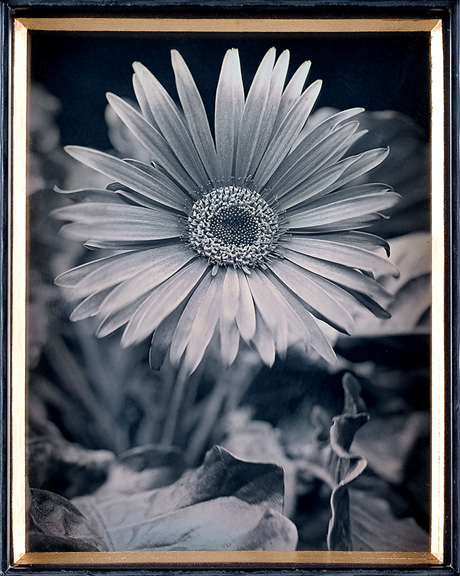
©Rob McElroy
Which proportion of
your time as a photographer do you devote to the daguerreotype
process?
Approximately eighty percent of my
time as a photographer is devoted to the daguerreotype process. I
still do some commercial photography, but the daguerreotype has been
consuming more and more of my time — mostly because of how beautiful
the resulting images are, but also because of how difficult the
process is. I thrive on challenges, and the daguerreotype is the
most difficult and challenging process to master of any photographic
process ever invented, bar none.
With which equipment
do you make these daguerreotypes?
I use modern photographic equipment to
make my daguerreotypes so that I can achieve the highest image
quality possible. I have never been interested in using 1850s
equipment or the reproductions of daguerreian-era equipment that
some photographers use. All of my cameras have been modified — in
order to accept the special plate holders and camera backs necessary
for making daguerreotypes. I shoot with several different cameras. I
use an 8" x 10" folding Kodak Master Camera (mostly to make
whole-plate daguerreotypes) that was made in the 1940s, and which
utilizes a unique plate-holder that can accommodate various image
sizes from 3¼" x 4¼" up to 8" x 10". I use a Sinar for my 4" x 5"
images, and I custom-designed and built a tilt-and-shift camera for
small 2½" x 3½" images. I also built a candid daguerreian camera,
utilizing a very fast modern lens, which allows me to make hand-held
circular daguerreotypes (no tripod required), as long as the sun is
shining brightly.
I designed and built my own
sensitizing boxes, mercury chamber, and fume hood, as well as
countless other items needed for this long-forgotten process,
including an oversized 11" x 14" reversing mirror which allows me to
make laterally correct (non-reversed) whole-plate daguerreotypes.
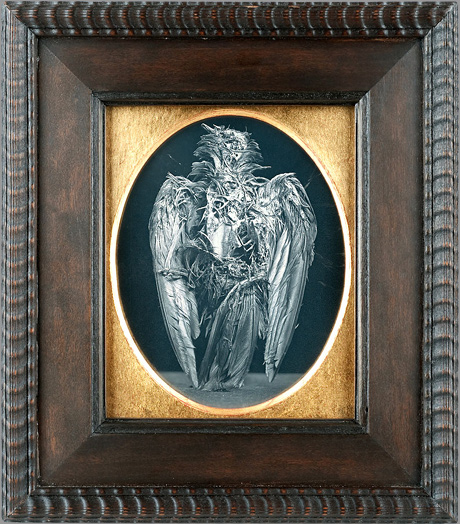
©Rob McElroy
Have you established
any bridges between your practice as a daguerreotypist and digital
photography?
Digital photography is an imaging tool
(just like film has been for the past 120 years) that doesn't play
much of a direct role with the daguerreotype process unless you use
it to make a digital positive of an existing photograph. That
positive could then be photographed or contact-printed onto a
daguerreotype plate, resulting in a copy daguerreotype. If done
correctly, copy daguerreotypes can look more lifelike and
three-dimensional than the first generation image. Other than that,
digital photography has only a documentary role with respect to the
daguerreotype, unless you want to make daguerreotypes of your
computer screen, which does work, if you want to transform a purely
digital image into a daguerreotype.
What are the
advantages and drawbacks of the daguerreotype as compared to other
photographic processes?
Like a fine painting, the
daguerreotype is a one-of-a-kind object. The image is unique and
there are no others exactly like it. The plate that is exposed in
the camera becomes the final object, and because there is no
negative with which to make multiple copies from, the daguerreotype
will always be considered a treasured object, rather than a "one of
ten or twenty or thirty" limited edition (thus owned by many
people). For that reason, the daguerreotype stands alone as the
photographic process that is the closest to painting, and (along
with painting) transports an artist's vision — from his mind,
directly to its final unique representation as a reflective image.
The daguerreotype also benefits from having one of the longest
tonal-scales, whereby it can capture incredible highlight and shadow
detail (which most other processes can't), resulting in super sharp
images that seem much more "real" than a paper photograph.
The only drawback a daguerreotype has,
is that it can't be readily reproduced, but I see that as an asset,
especially for the world's astute collectors of fine photography.
|







